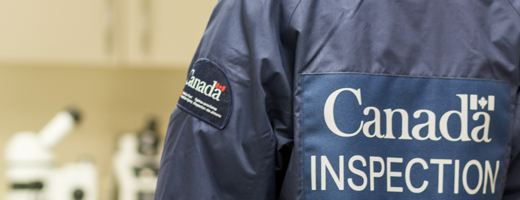Inspection and enforcement
Explore why inspections matter, procedures for our staff, resources to help businesses prepare, and the actions we take against non-compliance.
Inspection
How inspections work
The value of inspections for consumers and industry, and how we focus our efforts based on risk and science
How we decide to recall a food product
The 5-step process behind food safety investigations and what triggers them
Guidance for food inspectors
Procedures and responses to risk or when a business does not comply
Guidance for industry
How to get ready and what to expect if you produce, process, transport, import, or export food, plants, or animals
Sampling food products
How sampling is used to verify that food products are safe and what they claim to be
Food safety investigations
Reports on food safety incidents that have caused serious illnesses
Livestock feeds
National Feed Inspection Program, industry and inspector guidance, reports, and policy clarification
Enforcement
How we enforce
The policy and approaches that guide how we respond to non-compliance to protect consumers, the economy and the environment
Enforcement actions taken
Includes monetary penalties, suspensions, cancellations, charges laid, prosecution bulletins, food safety investigations and reports
Features

How food testing helps keep you safe
CFIA scientists test food products to look for undeclared allergens and other hazards, like pesticides and bacteria, that could make you or your loved ones sick.

Consistent and efficient inspections
In order to ensure the Safe Food for Canadians Regulations are applied nationally in a consistent manner across industry, the CFIA is making changes to its food inspection procedures.

The food safety puzzle: piecing together an outbreak investigation
Behind every outbreak of food poisoning, a team of detectives works around the clock to pinpoint the source. Canadian Food Inspection Agency, Health Canada and the Public Health Agency of Canada, explain how they connect the dots to save lives.
